This post may contain affiliate links. Read our disclosure policy.
These spicy Gochujang noodles feature big flavors in a small amount of time thanks to the sweet and spicy sauce covering chewy Asian noodles. Korean flavors at home and skip takeout with these better-than-restaurant Gochujang noodles. Bonus: You can have sweet and spicy vegan noodles on the table in 20 minutes.
Need another Asian-inspired recipe? Try chicken pad thai, Asian chicken wings, or Korean shredded beef tacos.
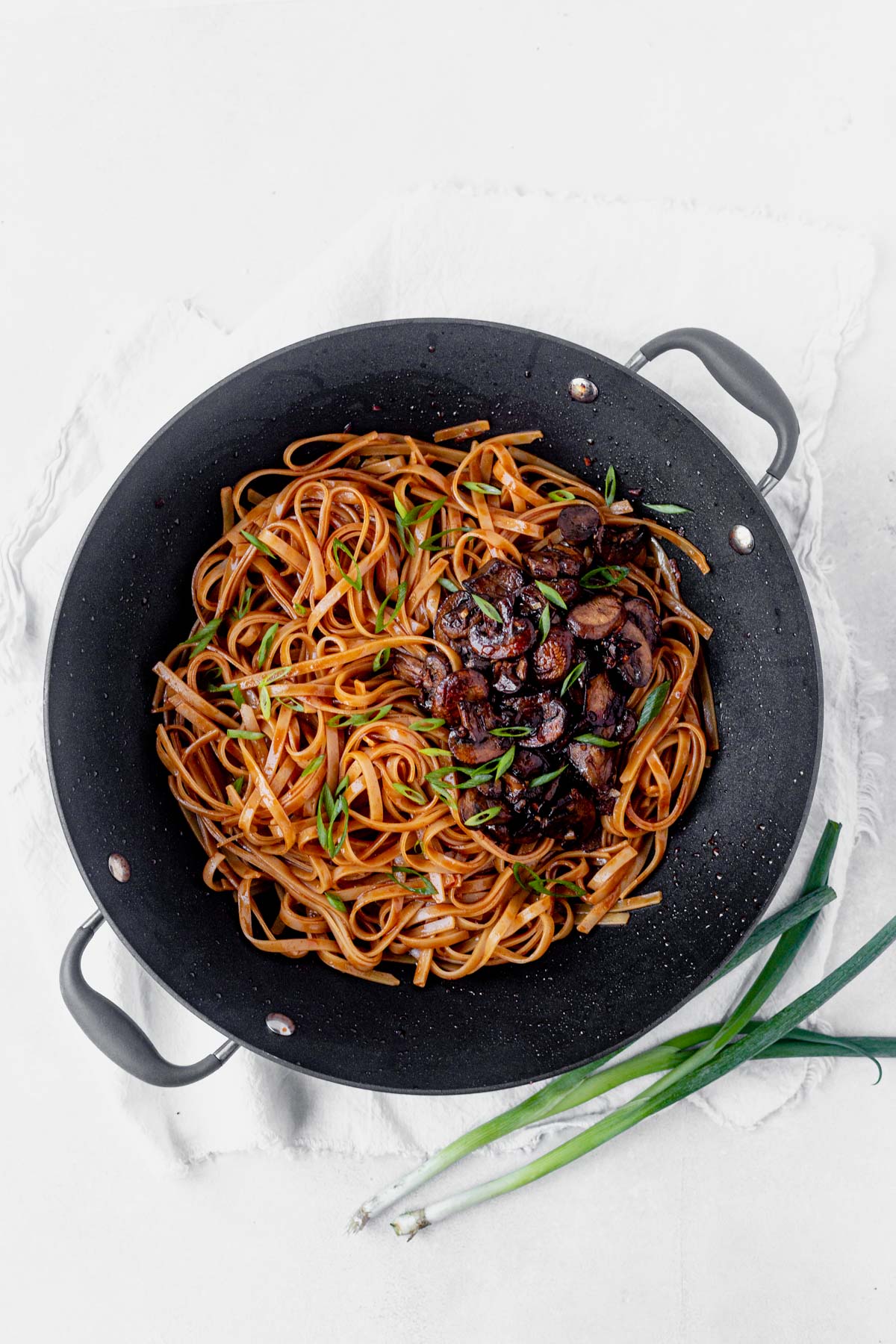
Table of Contents
Reasons I Love These Gochujang Noodles
The sauce: Sticky rice noodles are tossed in a sweet, spicy Gochujang sauce and topped with crispy caramelized mushrooms.
Vegan and easy to make gluten-free: This vegan dish is finished with sesame seeds and sliced green onion. It’s packed with flavor!
Simple to customize: change how spicy it is based on your taste, add more veggies, or throw in some protein.
Ingredient Notes
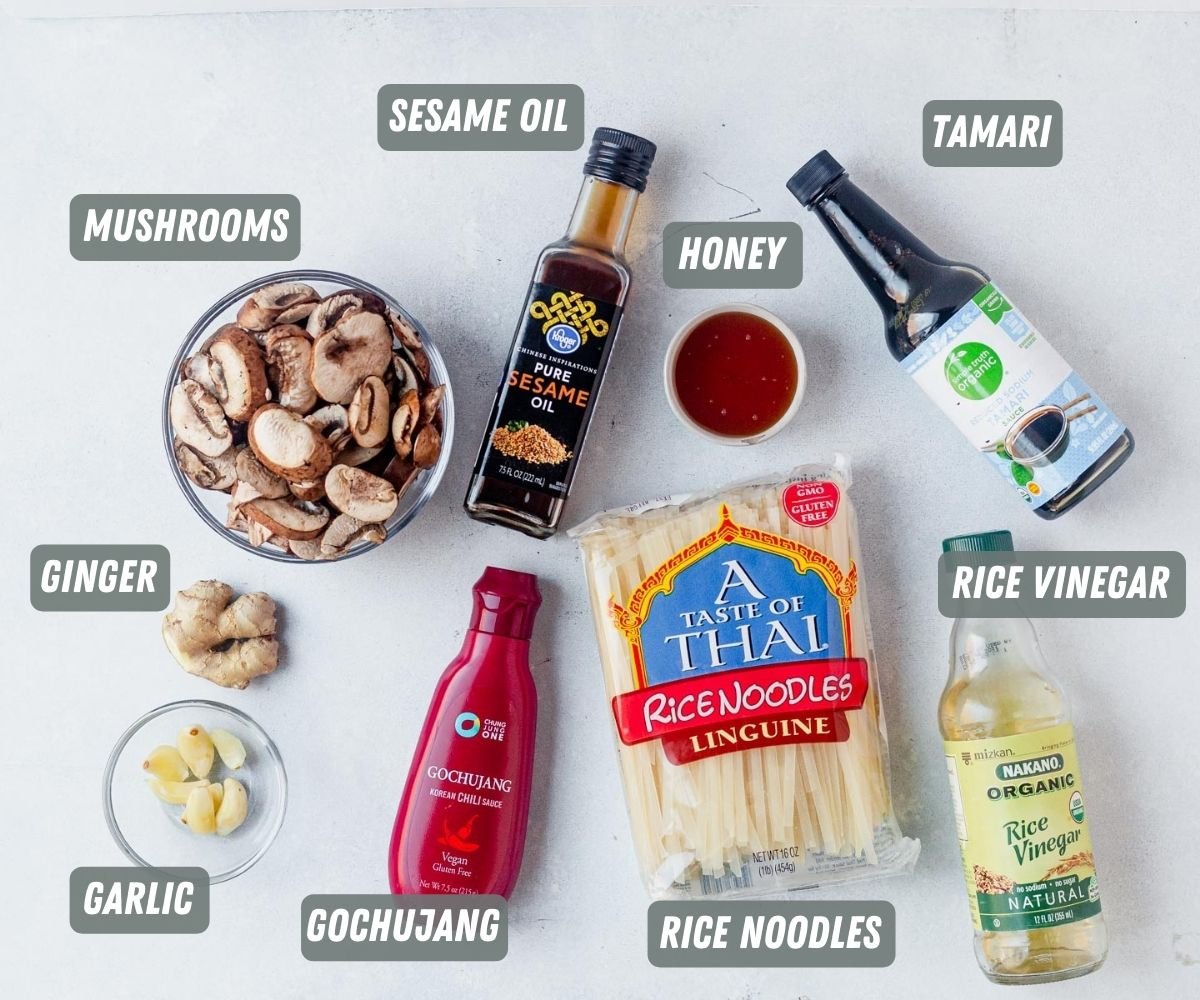
Gochujang
Gochujang paste is a spicy fermented Korean chili paste used often in Korean cooking. This key ingredient is made from glutinous rice, korean chili flakes, salt, and fermented soybeans (learn more about what Gochujang is here). It isn’t typically gluten-free, but Sempio sells a gluten-free Gochujan paste. Use more or less of it in the sauce depending on how spicy you want it. I don’t like a lot of heat and 2 tbsps was almost too much for me.
Where to buy: you can buy Gochujang in the International section of your local grocery store. You can also purchase it online or in Asian markets.
Noodles
Udon noodles are the classic chewy noodles for this recipe found in your local Asian market. You can use fresh, frozen, or dried udon noodles. We tested this recipe with rice noodles because they’re a bit more readily available and really liked them because of their slightly sticky texture that holds onto the thick sauce. Plus it happens to be gluten-free!
Substitutions: I prefer linguine-style noodles, however, you can purchase angel hair or spaghetti-style noodles. You could even use dried ramen noodles, though they won’t hold up to the heavy sauce as well. Zucchini noodles are a low-carb option!
Vegetables
Adding mushrooms gives this vegan dish a hearty feel. It’s a little meaty and adds a delicious flavor to these spicy noodles.
More vegetables: try adding baby bok choy, snap peas, or bell peppers to the mushrooms for a veggie-packed rice dish.
Sauce ingredients
- Reduced sodium tamari or soy sauce: I like to use tamari as a gluten-free option, but soy sauce is the traditional ingredient.
- Maple syrup or brown sugar: this balances out the heat in the recipe and helps thicken the sauce a bit.
- Sesame oil: we’re using this in the sauce and to cook the mushrooms. It adds an Asian flare to the dish rather than traditional olive oil.
- Rice vinegar: acid is important to balance recipes, especially sauce. You can use white wine vinegar, apple cider vinegar, or even lime juice if you don’t have rice vinegar on hand.
- Fresh ginger: this ingredient is a staple in Korean flavors and adds just the right amount of zing.
- Garlic: opt for fresh garlic rather than powder or pre-minced. It makes a big difference!
- Tapioca starch: this is mixed in the sauce to thicken it. You can also use arrowroot starch or corn starch.
Toppings
- Garnish with green onions, spring onions, red pepper flakes, and a soft-boiled egg like the one in this Birria ramen.
How to make Gochujang Noodles: Step-by-Step
Let’s walk through the steps with some photos and a video so you have a clear idea of what to expect when making these spicy korean noodles. This delicious chicken sausage pasta recipe is really easy and these step-by-step instructions will make sure they turn out every time.
Make the Gochujang sauce: Add the tamari (or soy sauce), honey, gochujang, rice vinegar, and sesame oil to a medium bowl and whisk well until the honey is combined and no longer thick and sticky.
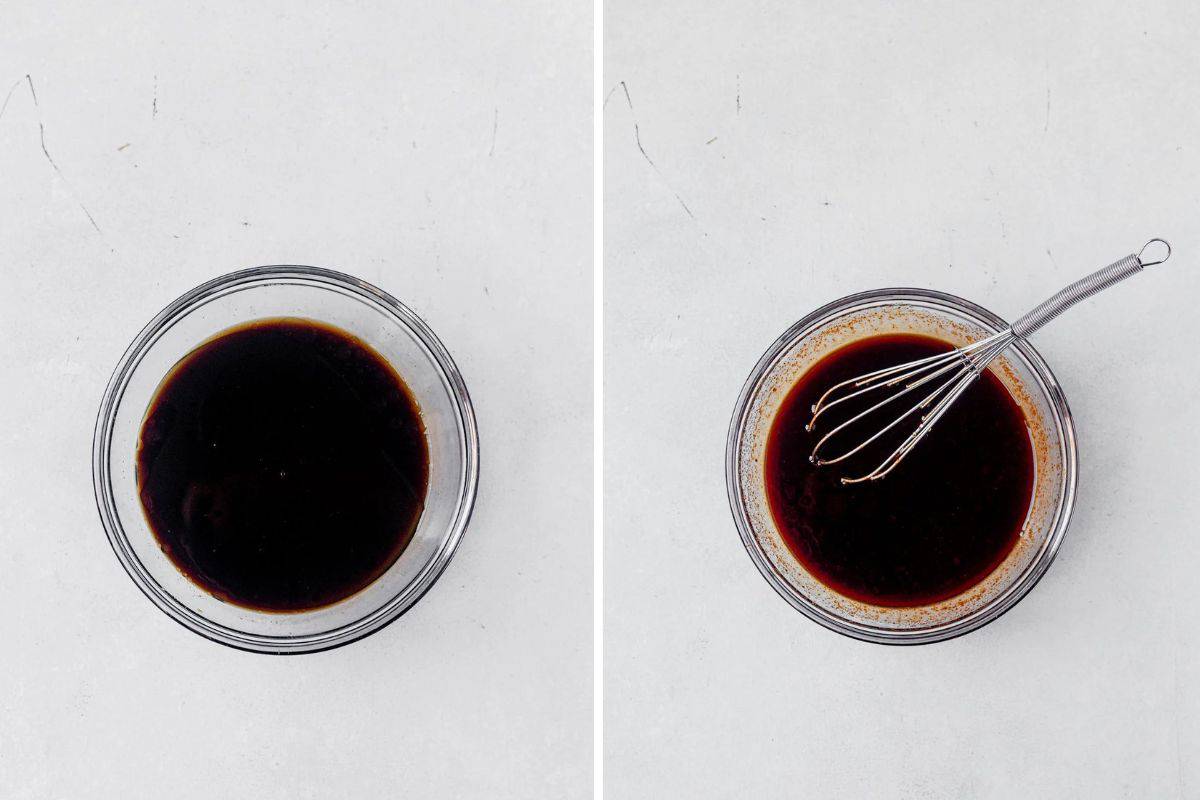
Cook the noodles: Make the noodles according to the package instructions. They usually require soaking in very hot water for 15-20 minutes. While they’re soaking, finish the rest of the dish.
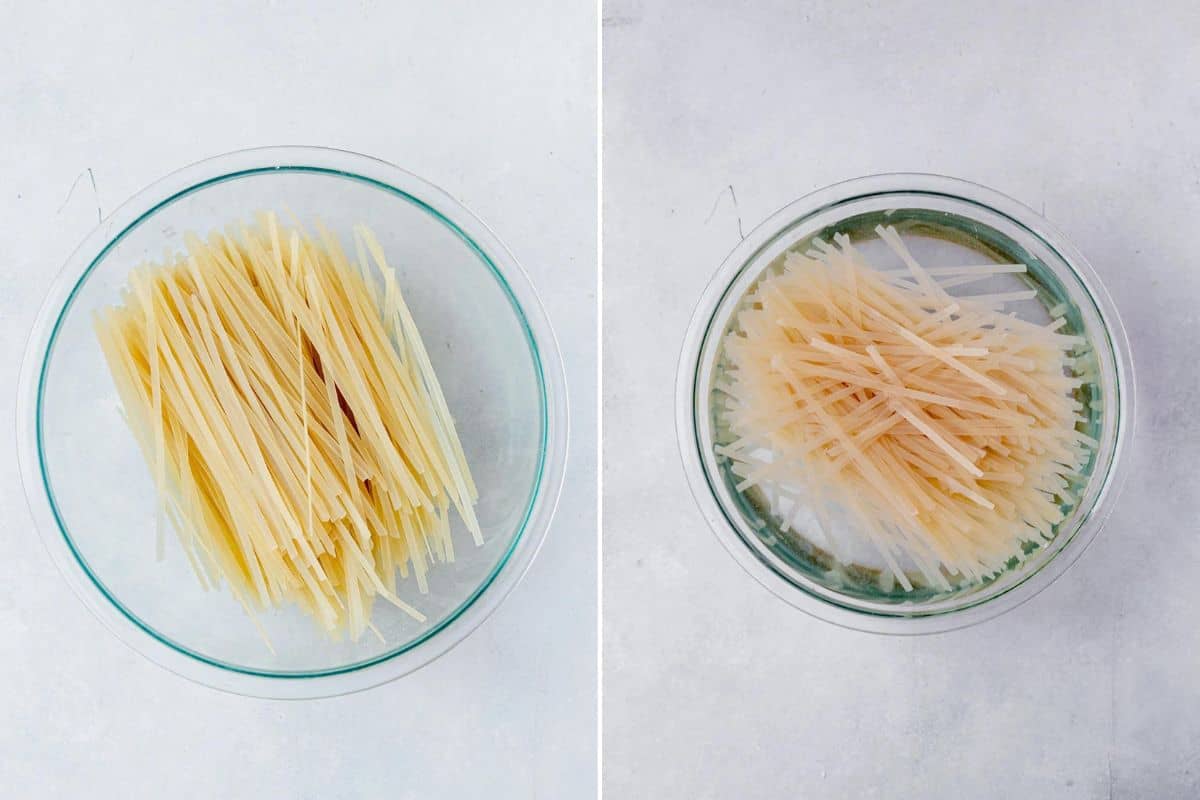
Cook the veggies: Heat the sesame oil in a large pan or wok over medium-high heat. When the oil is hot and shimmering, add the mushrooms and cook them for 3-4 minutes without stirring to get them golden and crispy. Turn the heat down to medium then add the ginger and garlic and cook for 4-5 more minutes, stirring occasionally. Add 2 tablespoons of the prepared sauce and continue to cook for another 1-2 minutes until the mushrooms begin to cook down and caramelize. Transfer the mushrooms to a plate or bowl.
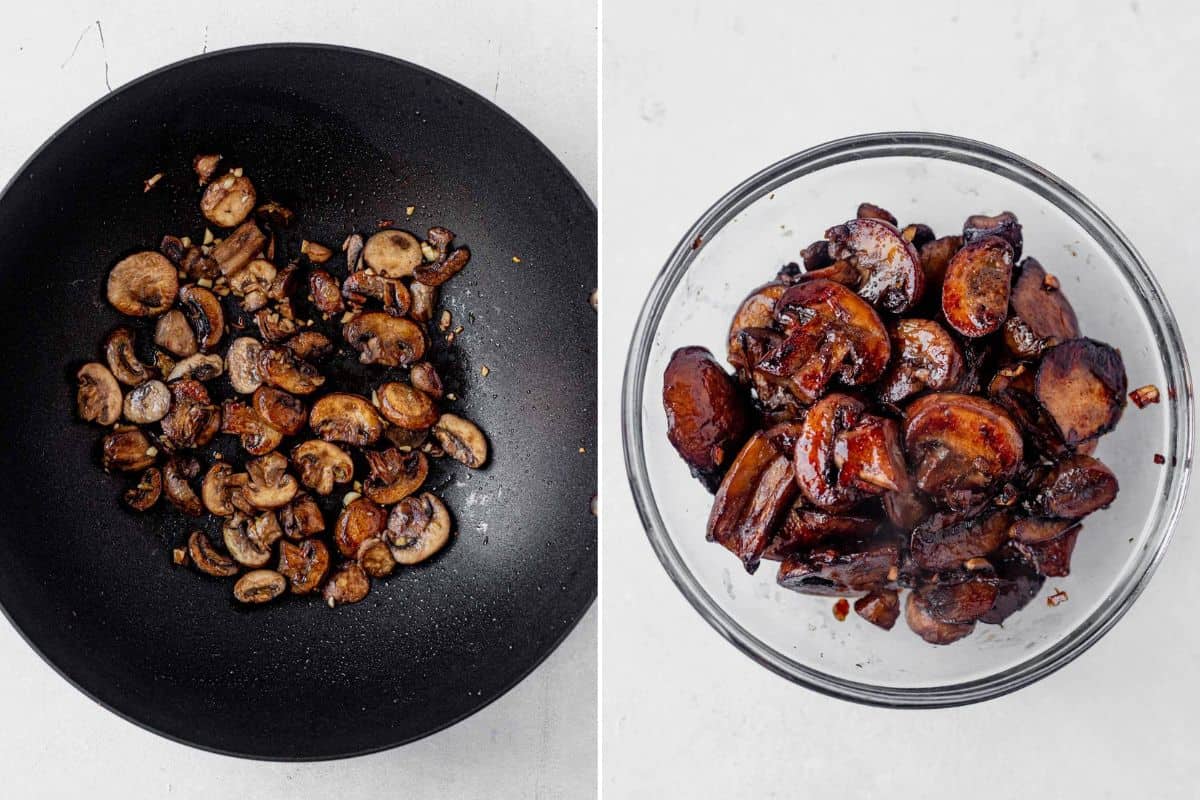
Toss the noodles: Pour the remaining sauce into the skillet and bring to a simmer over medium heat. Mix the tapioca starch with 1 tablespoon of water and add it to the sauce. Bring it to a simmer to thicken. It should be thick enough to coat the back of a spoon. Turn the down heat to medium-low and drain the noodles from the water if you haven’t already. Add the cooked noodles to the sauce then toss to combine until the noodles are just coated, 1-2 minutes.
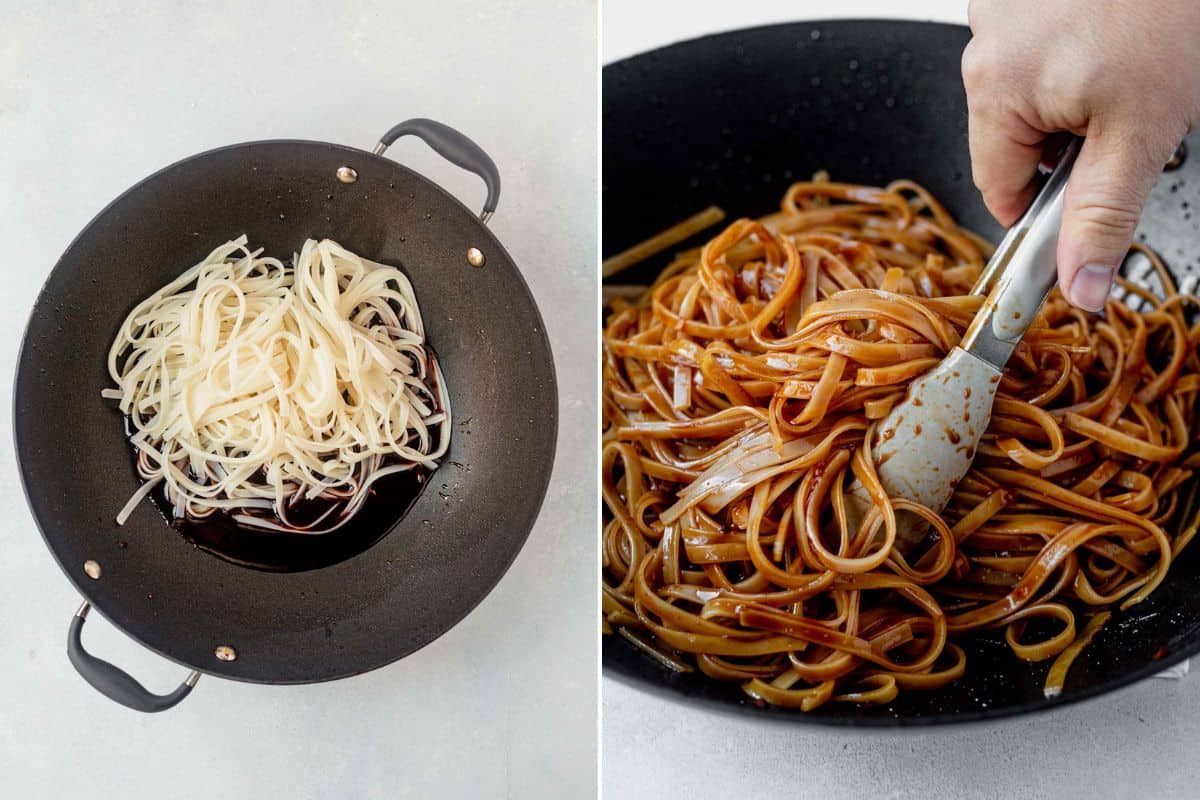
Serve: Remove from the heat and top with the mushrooms. Garnish with sesame seeds and sliced green onion before serving.
FAQs
Gochujang is a spicy Korean chili paste made from red chili peppers, fermented soybeans, rice and salt. It is a result of the fermentation process and as a result, has a slight sweetness to it.
This ingredient can be found in the Asian or International food aisle of your local grocery store. You can also purchase it on Amazon. Be sure you’re buying the actual paste rather than the sauce. I made this mistake the first time we tested this!
There is a strong spice level to Gochujang because it’s made from red chilis. Use a tbsp or so less if you want the Gochujang noodles less spicy.
Variations and Substitutions
- Add more veggies: add sliced red pepper, matchstick carrots, shredded cabbage or broccoli florets to the mushrooms when youo’re cooking.
- Add protein: double the sauce in the first step and add half to baggie with 1 1/2 lbs of flank steak, sliced against the grain. You could also do this raw shrimp. Allow it to marinade while the noodles cook. After the mushrooms are cooked, use the same oil to sear the steak strips on both sides for 4-5 minutes until crispy and cooked through.
- Add vegetarian protein: fry an egg in a separate pan and top the noodles with the runny egg before serving.
- Add hoisin sauce: this is a traditional ingredient in Gochujang, but one I decided to omit to keep this recipe refined sugar free. You can add 2 tablepoons to the sauce if you want.
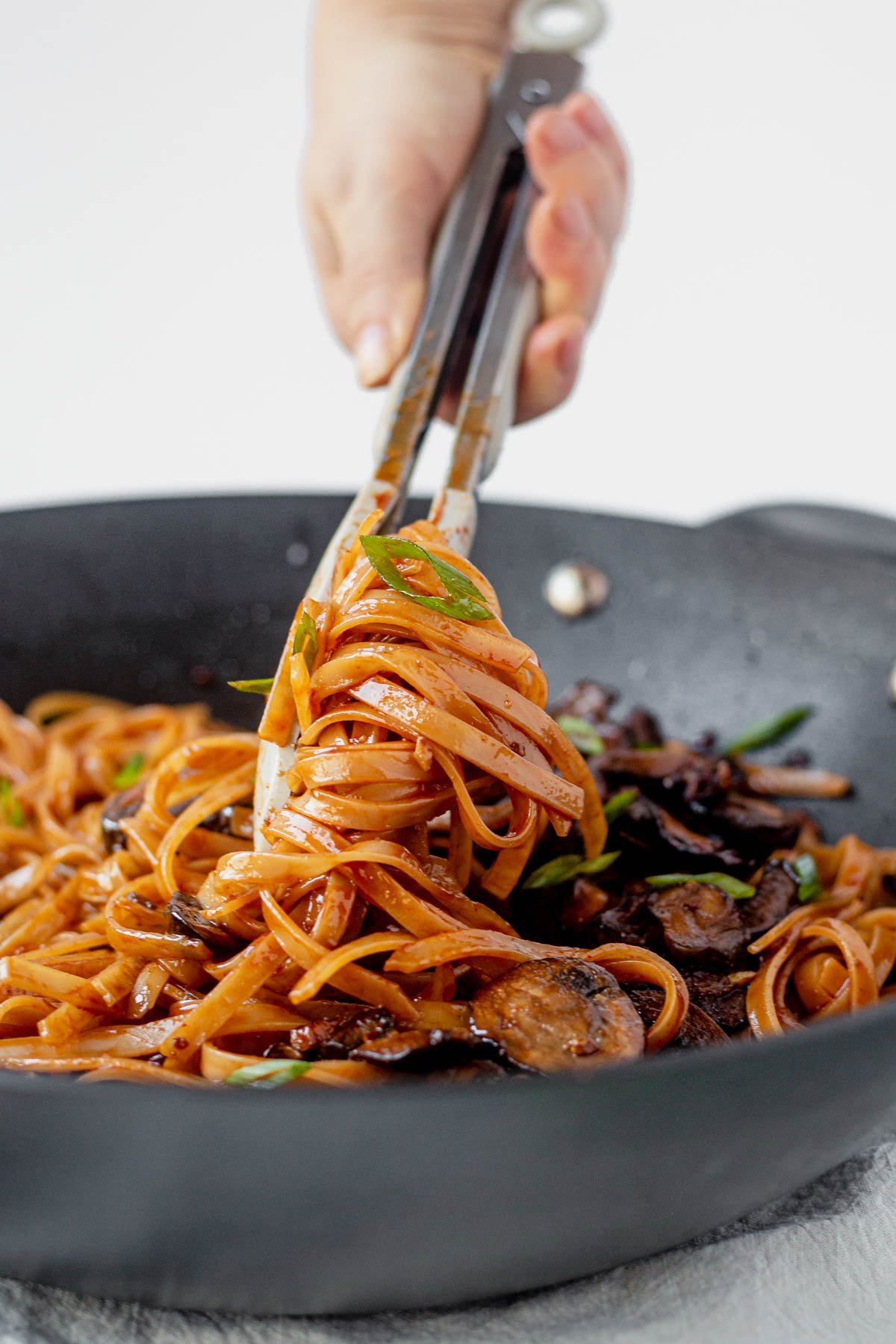
Storage and Reheating Instructions
Allow the Gochujang noodles to cool completely then store them in an air tight container in the fridge for up to 5 days. Reheat on the stove over medium-high heat until warmed all the way through. You can also reheat them in the microwave in 30 second increments.
How To Serve Gochujang Noodles
- On its own: we love this on its own with sesame seeds and sliced green onion.
- Top with grilled or seared shrimp
- Serve it alongside beef satay
- Top it with a fried egg
- Add seared flank steak on top
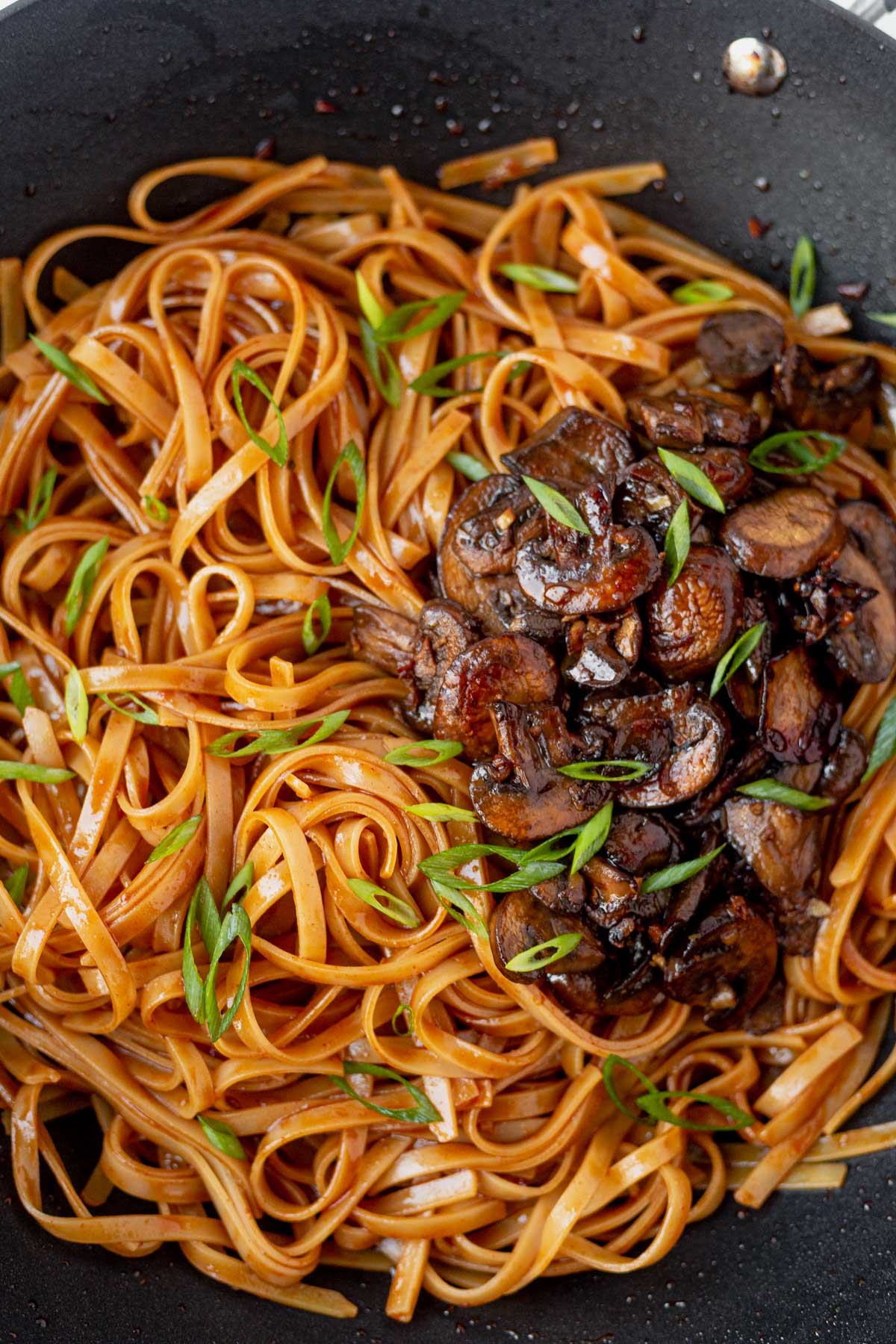
If you make this recipe, I’d love for you to give it a star rating ★ below. You can also tag me on Instagram so I can see it!
More Stir-Fry Recipes and Noodles
The Best Sweet and Spicy Gochujang Noodles
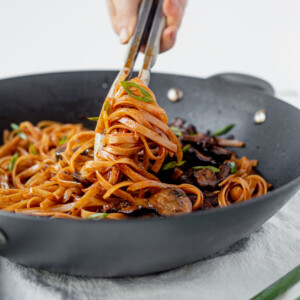
Save this Recipe!
Ingredients
For the sauce
- 1/2 cup tamari or soy sauce (tamari is a gluten free option)
- 1/4 cup raw honey
- 1-3 tablespoons Gochujang (korean chili paste) more or less based on your desired spice level
- 2 tablespoons sesame oil
- 2 tablespoons rice vinegar
For the noodles
- 16 ounces rice noodles or buckwheat noodles
- 2 tablespoons sesame oil
- 16 ounces baby bella mushrooms
- 1 teaspoon fresh grated ginger
- 4 cloves garlic minced
- 1 tablespoon tapioca, arrowroot or corn starch
- Garnish: green onion, sesame seeds, or sriracha
Instructions
- Add the tamari (or soy sauce), honey, gochujang, rice vinegar, and sesame oil to a medium bowl and whisk well until the honey is combined and no longer thick and sticky.
- Follow the directions on the noodle’s package to cook them. They usually require soaking in very hot water for 15-20 minutes. While they’re soaking, finish the rest of the dish.
- Heat the sesame oil in a large skillet or wok over medium-high heat. Add the mushrooms when the oil is hot and begins to shimmer. Cook the mushrooms for 3-4 minutes, without stirring, to get them golden and crispy.
- Turn the heat down to medium and add the ginger and garlic and cook for 4-5 more minutes, stirring occasionally. Add 2 tablespoons of the prepared sauce and continue to cook for another 1-2 minutes until the mushrooms begin to cook down and caramelize. Transfer the mushrooms to a plate or bowl.
- Pour the remaining sauce into the skillet and bring to a simmer over medium heat. Mix the tapioca starch with 1 tablespoon of water and add it to the sauce. Bring it to a simmer to thicken. It should be thick enough to coat the back of a spoon.
- Turn the down heat to medium-low then add the drained and cooked noodles to the sauce. Use tongs to toss them together until the noodles are completely coated, 1-2 minutes.
- Remove from the heat and top with the caramelized mushrooms. Garnish with sesame seeds and sliced green onion before serving
Notes
Video
Nutrition
Nutrition information is automatically calculated, so should only be used as an approximation.










Everyone ate this to my delight. We have a vegetarian, a pescatarian, & 2 meat-eaters, so this is rare. Unfortunately, I had to omit the mushrooms bc they had started to go bad, so I went with the matchstick carrots. Will try again with mushrooms next time.
Sounds yummy, Leah! Can’t wait to hear what you think about the mushrooms.
I had a bad feeling about the measurements of these ingredients but went with it anyway.. safe to say my feelings were valid, this was basically inedible.
Can you say more? What was “off” and why?
Made these two days in a row, with frozen vegetables from a bag! Cheap, quick and extremely delicious!